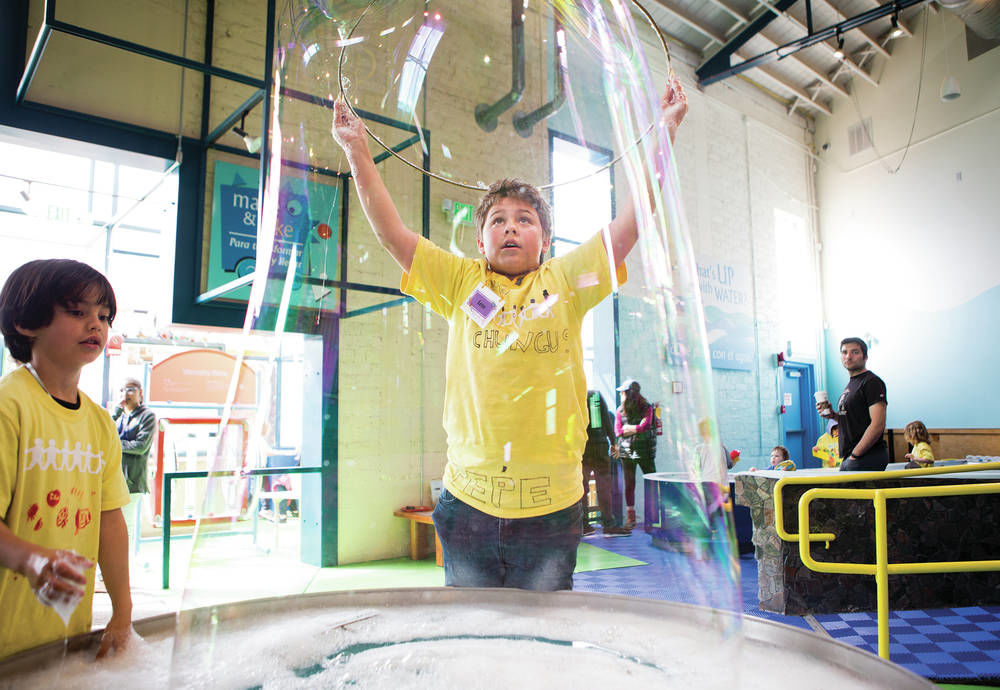December 14, 2019 | By Andy Winnegar

December 14, 2019 | By Andy Winnegar
I hadn’t been to the Santa Fe Children’s Museum in over 20 years, when my kids would spend hours there exploring and playing.
I recently walked through the museum with Susan Lynn, the executive director, and staff members Leona Hillary and Hector Solis to learn about its efforts to serve children with disabilities and to recommend improvements.
“The Santa Fe Children’s Museum is based on a simple idea: Children learn by doing, and we want to make sure that every child has the same opportunities to be involved,” Lynn said. “We want ideas on how to improve our accessibility to better serve all children regardless of their disability.”
As I entered the main lobby, the energy and noise of children busily at play surrounded me.
“This is our busiest season of the year,” Lynn said.

From mid-November to the end of the year, the museum staff is focused on enhancing each visitor’s experience and preparing for an upcoming winter break camp.
The facility was inviting: bright and full of light. I especially enjoyed the wide, winding paths that carry visitors past exhibits, an outdoor island and an adobe playhouse.
Hillary, who has worked as a special- education teacher, said the staff has worked with the University of New Mexico to increase sensory-sensitive practices, such as offering dim lighting and quiet areas, which are more inviting for children with autism.
Overall, I was impressed with the facility’s accessibility.
Most of the museum appeared to meet the requirements of the Americans with Disabilities Act that were in effect when the facility was last renovated. But it will need to consider access for both children and adults when planning future renovations — using newer accessibility standards.
The Governor’s Commission on Disability offers free assistance on accessibility guidelines for anyone planning new construction and alterations.
During our walk-through, we identified some possible improvements, such as modifying the curb ramps at the accessible parking spaces.
The museum had a wide accessible route to the building’s entrance from the relatively level accessible parking spaces — a rarity in hilly Santa Fe.
Removing a couple of potential hazards along the route, such as overhanging tree branches, and relocating an entrance light were easy fixes, said Solis, the facility manager.
The front door is not required by the ADA to be automated, but a power-assisted door would reduce barriers for individuals using wheelchairs and other mobility devices.
Other possible building improvements both inside and outside included widening some walkways, adding additional handrails, using movable and adjustable height displays and opening up crowded displays areas so children using wheelchairs can reach the model railroading controls and participate in other activities.
We also discussed ways of increasing access for children and adults who are blind by using audio descriptive displays, a tactile exhibit map and Braille signage.
During classroom activities, kids who are deaf may benefit from having a sign language interpreter.
Having available technology like FM systems, in which sound is transmitted wirelessly from the speaker to an individual who is hard of hearing, also would increase access.
I suggested working with the New Mexico Commission for the Blind, the Commission for the Deaf and Hard of Hearing, and the New Mexico Deaf School.
In a follow-up email, Lynn said, “We have already made some of the minor modifications you suggested.”
Because the state owns the building, she said, officials will be asking the Legislature to provide funding for bigger renovations.
“We were thrilled with your feedback about what a good job we’re doing, and eager to continue to expand and improve access for children of all abilities to learn and play,” Lynn said. Andy Winnegar has spent his career in rehabilitation and is based in Santa Fe as a training associate for the Southwest ADA Center. He can be reached at a@winnegar.com.
